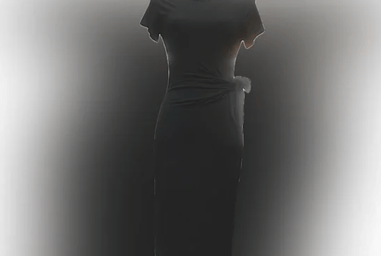How to Properly Wash and Clean Items from Thrift Stores and Salvation Army



Understanding Your Thrift Store Finds
Shopping at thrift stores or the Salvation Army often presents a diverse and ever-changing array of items. The clothing and shoes available can range from gently used articles to brand new pieces that still retain their original tags. This variety is what makes thrifting an exciting yet discerning experience.
Firstly, it’s essential to closely inspect each piece for its overall condition. Look for visible signs of wear such as stains, holes, or fabric pilling. Some items might require minor repairs, which can be easily managed if you have basic sewing skills. Additionally, certain items may still have care instructions attached, offering valuable guidance for appropriate cleaning methods.
Thrift store finds can often include hidden gems, such as high-end or designer clothing that’s been donated. The ability to identify these treasures can make your thrifting efforts worthwhile. Becoming familiar with brand labels and their associated quality can aid in spotting these special items amidst the racks.
Understanding the material and fabric type of each item is crucial for proper cleaning and maintenance. Different fabrics require specific care methods; for instance, delicate materials like silk or wool need gentle handling, while cotton and synthetic blends can usually withstand more robust cleaning processes. Tags providing fabric composition are a handy tool in this regard, but when absent, a basic knowledge of textiles can go a long way.
In summary, every thrift store visit is a unique opportunity to find a variety of clothing and shoes. Paying close attention to condition, care instructions, and fabric type not only helps in discerning the value of your finds but also ensures their longevity and cleanliness. Armed with this knowledge, you'll be well-prepared to tackle the unique challenges of cleaning and preserving thrift store items.
Pre-Wash Preparation and Inspection
Before you immerse your thrift store or Salvation Army finds in a cleaning process, it's crucial to thoroughly prepare and inspect each item. Start by sorting the items according to material, color, and type. This not only ensures that everything is properly cleaned but also prevents color bleeding and damage to more delicate fabrics. Group similar materials together, such as cotton, denim, and synthetics. Separate darks from lights, and keep delicate items like silk or wool apart from more durable fabrics.
The next step is a meticulous inspection. Check for stains, missing buttons, tears, or any other signs of wear and damage that may require attention before washing. Stains on clothing can usually be pre-treated with a stain remover appropriate for the type of fabric. For items like jeans or cotton shirts, a sturdy liquid stain remover will often suffice. More delicate items may require a gentler approach, such as a mix of water and white vinegar or a fabric-specific cleaner.
Buttons, zippers, and seams should also be examined. Replace missing buttons and repair broken seams to ensure the item’s longevity. For minor repairs that you're not comfortable handling yourself, consider taking the items to a professional tailor or cobbler.
Pre-soaking can be an effective method for deeply embedded dirt and grime, especially for heavier fabrics. Use lukewarm water combined with a mild detergent for soaking. Let the items sit for at least 30 minutes to one hour before proceeding to wash. Spot cleaning is equally beneficial for difficult stains. Apply a gentle cleaner directly to the stain and rub gently with a soft brush or cloth.
When choosing cleaning products, opt for those that are both effective and gentle. Hypoallergenic detergents are a great choice, especially if you have sensitive skin. For shoes, a mixture of water and a mild soap can be used, applied with a soft cloth or brush. Always read the labels on cleaning products to ensure they are suitable for the type of material you are dealing with.
Washing and Drying Techniques
Proper washing and drying are critical to maintaining the longevity and quality of your thrift store and Salvation Army purchases. Each fabric has unique requirements to ensure it remains in top condition, and understanding these nuances can make a significant difference. When dealing with delicate materials such as silk or lace, it is recommended to use the delicate cycle on your washing machine. A mild detergent, free from harsh chemicals, will safeguard the fabric's integrity. Additionally, setting the water temperature to cold or as advised by the garment's care label minimizes the risk of damage.
Conversely, more robust fabrics like denim or cotton can endure more vigorous washing methods. For such fabrics, a regular cycle with warm water is generally appropriate, combined with a standard detergent. Always check for any specific care instructions on the labels to avoid potential mishaps. Pre-treat any visible stains with a suitable stain remover to ensure thorough cleaning.
Drying your items correctly is equally important. Air drying is often the best method for delicate fabrics, as it reduces the stress that high heat can place on the fibers. Simply lay the garments flat on a clean towel or drying rack, ensuring they are spread out to their natural shape to prevent wrinkles. For more durable materials, using a dryer is suitable; however, choose a lower heat setting to minimize shrinkage and wear. Utilize dryer balls to help separate the clothes and enhance the drying efficiency while reducing static cling.
Once washing and drying are complete, store your clothes properly to maintain their condition. Ironing garments made from materials that wrinkle easily can keep them looking sharp. Use the appropriate heat settings for the fabric type to prevent damage. For storage, hanging clothes in a well-ventilated closet or using breathable garment bags for more delicate items will help keep them fresh and ready to wear.










